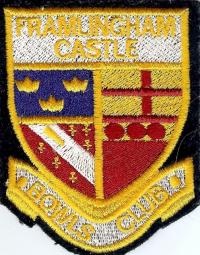
Framlingham Castle Bowls Club
A friendly welcome on one of the oldest greens in the country

A friendly welcome on one of the oldest greens in the country

That the club is called Framlingham Castle Bowls club is very apt. It not only explains our location but also our history. The extensive historical records which exist for Framlingham mention bowls as played on the present green more than once. In his renowned history of the town first published in 1833 R Green quotes the Revd. Richard Golty, the long serving Rector of the town in the 17th century. In his parish archives he wrote that in a park attached to the castle were “Castle yards, 4 acres, John Moore had them in 1649….and an acre of barley, in the bowling aly”.
This is consistent with other histories of the game written for the game nationally and internationally. The sport was almost certainly a sport for the privileged and rich. It seems that bowling greens may have been of two main types, the private narrow greens (alleys) attached to castles and large houses or the more public yards where more ordinary folks played.
In his same history Green endorses the above comment and describes the use of the green in the 19th century. “In Summer there is a fine bowling green adjoining the Castle for recreation abroad. There can be little doubt that the latter is a spot which has from time immemorial been used for the enjoyment of bowling”. He further adds, “ The green is open from the first week in May to the first week in October, and two clubs are held, viz the Tradesmen’s on Wednesdays and the Gentleman’s on Thursdays”.
The problem that confronted the club as it entered the 20th century was that the green was unsuitable for playing the game in straight rinks as codified by the Scottish players Wm. Mitchell and James Brown in 1892. At that time the green was not level. Some versions say that it was saucer shaped, some say it sloped considerably towards the Mere on its west side. Whichever Framlingham players countered this by playing with woods which had a very exaggerated bias.
This had frustrating, if amusing, consequences. In the Framlingham Weekly News of 21st August,1909 we read: “ Sad to relate, not one of the members of Framlingham Bowling Club who visited Saxmundham on Monday succeeded in achieving anything worth talking about. The result is due entirely to their biased bowls which, though best adapted to the Framlingham green, are next to useless on level courts of the Scotch pattern”.
This problem was not properly resolved until the 1950s when due to the enterprise of one Ken Freeman and the generosity of Mr. James Mason Martin, the green was purchased from Pembroke College, custodians of the castle as trustees of the will of the former owner, Sir Robert Hitcham.
This enabled the club to undertake the task of properly flattening the green to produce one of the best bowling surfaces in the county. Visitors delight on playing on an excellent surface with one of the best settings to be found,
The club affiliated to the County Association in 1922. The County in turn joined the EBA in 1934. Framlingham was first mentioned in the national handbook along with 25 other Suffolk clubs in the year 1949.